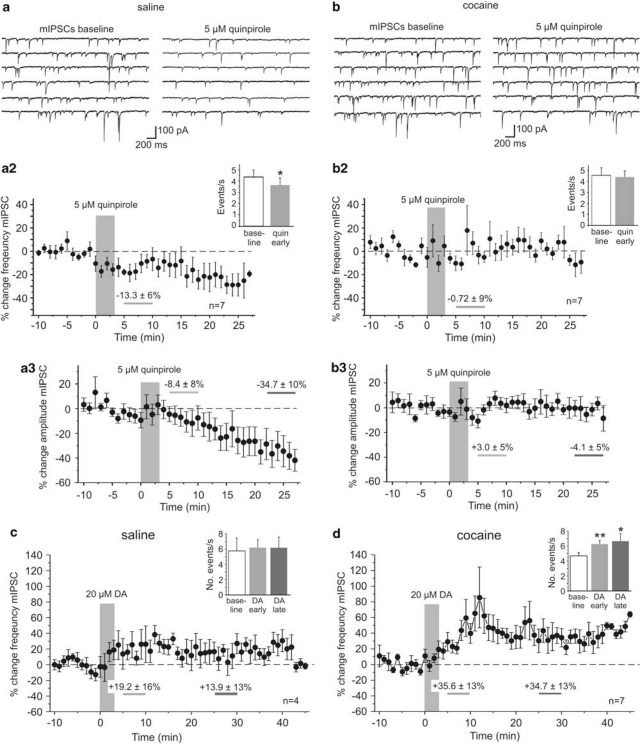Figure 5.
Dopamine and D2 receptor-dependent modulation of action potential independent miniature IPSCs in saline- and cocaine-treated animals. (a) In saline-treated animals, (n=7) quinpirole (5 μM) significantly reduced the frequency and the average amplitude of mIPSCs. Top: representative traces showing voltage-clamp recordings of mIPSCs in PFC pyramidal cells before (left column) and after quinpirole application. (a2) Time course of quinpirole effects on the frequency of mIPSCs. The inset shows a comparison of the average frequency of events from all cells during baseline and 5–10 min after quinpirole application. (a3) Time course of quinpirole effects on the average amplitude of mIPSCs. The reduction in mIPSC amplitude became significant during the end of our recordings (23–27 min post-quinpirole application; −34.7±10% p<0.05) before experiments were terminated by the experimenter. (b) In cocaine-treated animals (n=7), quinpirole did not consistently change the frequency or amplitude of mIPSCs. Top: representative traces showing voltage clamp recordings of mIPSCs before (left column) and after quinpirole application. (b2) Time course of quinpirole effects and average frequency of events from all cells during baseline and 5–10 min after quinpirole application (inset). (b3) Time course of quinpirole effects on average mIPSC amplitude. (c, d) Activation of both D1 and D2 receptors with the full agonist DA (20 μM) did not significantly change the frequency of mIPSCs in saline-treated animals (c, n=4), but as shown in (d) led to a significant increase in the number of mIPSCs in cocaine-sensitized animals (n=7; *p<0.05, **p<0.01, paired t-tests).

